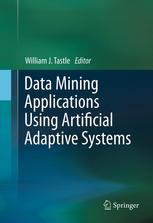

Most ebook files are in PDF format, so you can easily read them using various software such as Foxit Reader or directly on the Google Chrome browser.
Some ebook files are released by publishers in other formats such as .awz, .mobi, .epub, .fb2, etc. You may need to install specific software to read these formats on mobile/PC, such as Calibre.
Please read the tutorial at this link: https://ebookbell.com/faq
We offer FREE conversion to the popular formats you request; however, this may take some time. Therefore, right after payment, please email us, and we will try to provide the service as quickly as possible.
For some exceptional file formats or broken links (if any), please refrain from opening any disputes. Instead, email us first, and we will try to assist within a maximum of 6 hours.
EbookBell Team

0.0
0 reviewsThis volume directly addresses the complexities involved in data mining and the development of new algorithms, built on an underlying theory consisting of linear and non-linear dynamics, data selection, filtering, and analysis, while including analytical projection and prediction. The results derived from the analysis are then further manipulated such that a visual representation is derived with an accompanying analysis. The book brings very current methods of analysis to the forefront of the discipline, provides researchers and practitioners the mathematical underpinning of the algorithms, and the non-specialist with a visual representation such that a valid understanding of the meaning of the adaptive system can be attained with careful attention to the visual representation. The book presents, as a collection of documents, sophisticated and meaningful methods that can be immediately understood and applied to various other disciplines of research. The content is composed of chapters addressing: An application of adaptive systems methodology in the field of post-radiation treatment involving brain volume differences in children; A new adaptive system for computer-aided diagnosis of the characterization of lung nodules; A new method of multi-dimensional scaling with minimal loss of information; A description of the semantics of point spaces with an application on the analysis of terrorist attacks in Afghanistan; The description of a new family of meta-classifiers; A new method of optimal informational sorting; A general method for the unsupervised adaptive classification for learning; and the presentation of two new theories, one in target diffusion and the other in twisting theory.